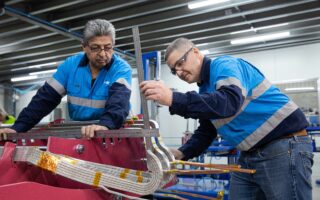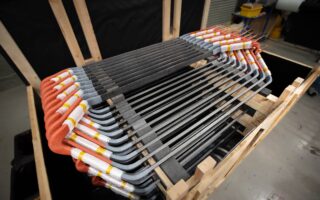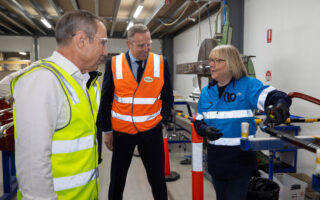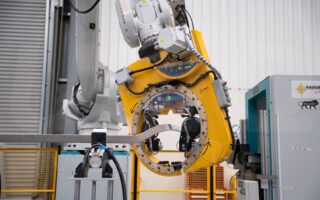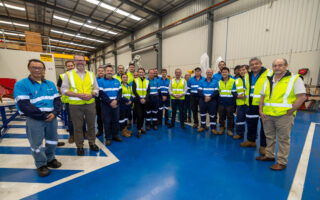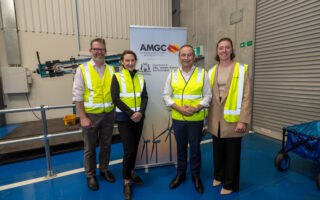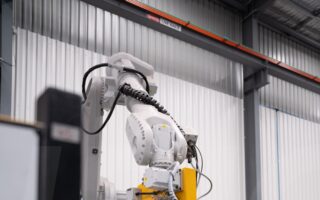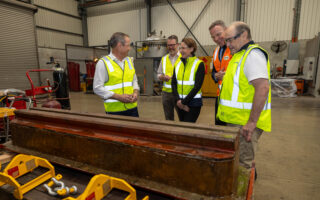Near million dollar co-investment powers up Western Australian manufacturer under Wind Energy Co-Investment Program
The Western Australian Government’s $8 million Wind Energy Manufacturing Co-Investment Program has made its first co-investment. Australian Winders, Australia’s only maker of large coil components, will deploy funds to manufacture components for electrical generators and motors to seize new opportunities in the renewable energy industry.
Established in 2008, Australian Winders specialises in repairs and the manufacture of industrial motor windings. It keeps important power generation, mine sites, rail and other infrastructure running in Australia and internationally.
The $976,408 project is being assisted by a $488,204 co-investment from the Wind Energy Manufacturing Co-Investment Program, which is administered by the Advanced Manufacturing Growth Centre (AMGC). The project is expected to lead to an estimated 25 new jobs and $17.8 million in new revenues over five years.
The investment will enable Australian Winders to upgrade its coil line with new equipment, including robotic taping heads, hydraulic hot presses, and automated testing systems, allowing the company to boost the speed and quality of coil looping, spreading, and wire insulation to meet international standards.
The Premier of Western Australia, Hon. Roger Cook, said: “Becoming a renewable energy powerhouse and making more things here are key parts of my government’s strategy for WA to remain the strongest economy in the nation.
“By manufacturing wind turbine infrastructure in Western Australia, we’ll not only help in the fight against climate change, but we will also create jobs and opportunities for Western Australians.
“This partnership with Advanced Manufacturing Growth Centre will help my government to seize these opportunities and cement WA’s role at the forefront of the global energy transition.”
Over eight months, the company will partner with copper wire specialist Westral and invest in equipment and training to provide Australian wind farm operators with a local supply of coil components that help turbines generate energy from thin air.
Western Australia’s Energy and Decarbonisation and Manufacturing Minister Amber-Jade Sanderson, said: “Supporting local businesses like Australian Winders strengthens our economy, creates skilled jobs, and ensures WA is well positioned to play a key role in the clean energy transition.
“The Cook Government is committed to developing a strong, sovereign manufacturing base that supports our transition to renewable energy.
“The Wind Energy Manufacturing Co-Investment program is a practical example of how we’re partnering with industry to grow local capability and create new economic opportunities.
“Through our collaboration with the Advanced Manufacturing Growth Centre, we’re connecting local manufacturers with the expertise and support they need to succeed in the wind energy supply chain.”
An estimated 20 roles are also expected to be upskilled within 12 months of the project’s conclusion.
Tony O’Brien, Managing Director of Australian Winders said: “With Australian Winder’s manufacturing operations already at maximum output, we have been unable to take on new contracts or pursue growth opportunities. By increasing production capacity and automating key processes, this co-investment via the WA Government will remove existing bottlenecks, improve efficiency, and reduce lead times.
“As a result, we will be positioned to meet rising demand in the wind energy sector, secure new contracts, and strengthen our role as a key domestic supplier. This expansion will not only allow Australian Winders to grow within our existing markets but also create the capacity needed to explore new opportunities, ensuring the company remains competitive and responsive to industry needs.”
The funds will have been made available through a co-investment and advice program co-created by the Western Australian Government and AMGC to enhance local businesses’ capacity and capability in wind energy, manufacturing and servicing supply chains.
Managing Director of the Advanced Manufacturing Growth Centre (AMGC), Dr Jens Goennemann, said: “Australian Winders is a great example of the latent manufacturing potential we have in Australia. With the right support and focus, we can help companies and this nation manufacture increasingly complex goods by leveraging the skills we already have.
“Through this project, Australian Winders will first offer local repair and maintenance of wind turbine coils, then as they skill up, they will be able to manufacture new coils for OEMs and wind farm operators replacing an entirely imported product. This is a highly worthwhile effort to back as the program’s first co-investment.”
The co-investment program consists of two streams:
- Market entry stream: Capability focused, indicative project size $20K-$60K (co-investment contribution $10K-$30K). This stream supports pre-qualification and accreditation processes, niche software, process improvement and alike.
- Market growth stream: capacity and capability focused, including capital and/or operating expenditure. Indicative project size $500K-$1 million (Co-investment contribution $250K-$500K). This stream supports plant and equipment enhancement (up to 25% of total project cost), R&D projects to create a competitive advantage, and associated investment in ‘market entry’ projects.
Applications to the Wind Energy Manufacturing Co-Investment Program are open, continuous, and competitive until available funding has been exhausted.
Manufacturers interested in applying for funds under either of the two program streams can access written guidelines and a pre-recorded webinar via https://www.amgc.org.au/wind-energy-program/
Program details, eligibility criteria and application portal can also be found at: www.amgc.org.au/wind-energy-program/
Over the past nine years, AMGC has facilitated more than 500 national collaborations and co-funded over 161 industry projects, while creating more than 4,300 jobs across the country. It has invested over $137 million of combined industry and Government funds into manufacturing projects, resulting in an estimated $1.62 billion in additional national revenue.

